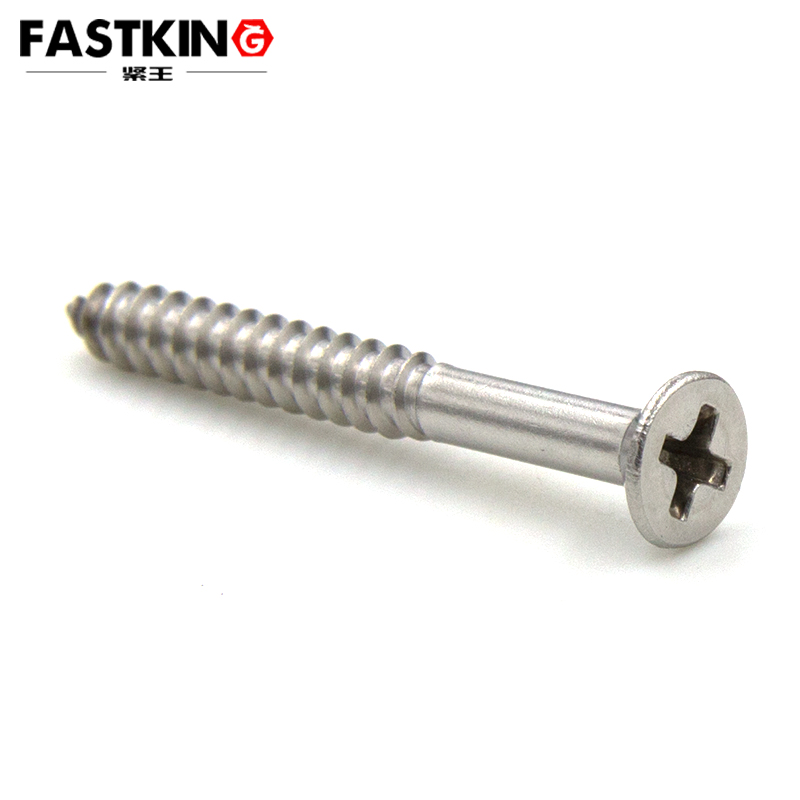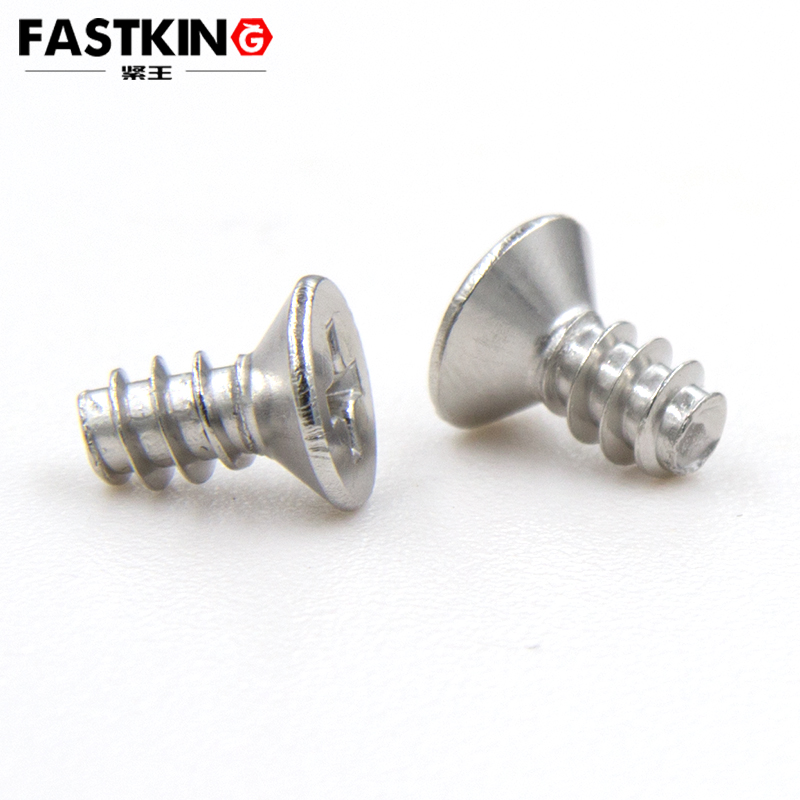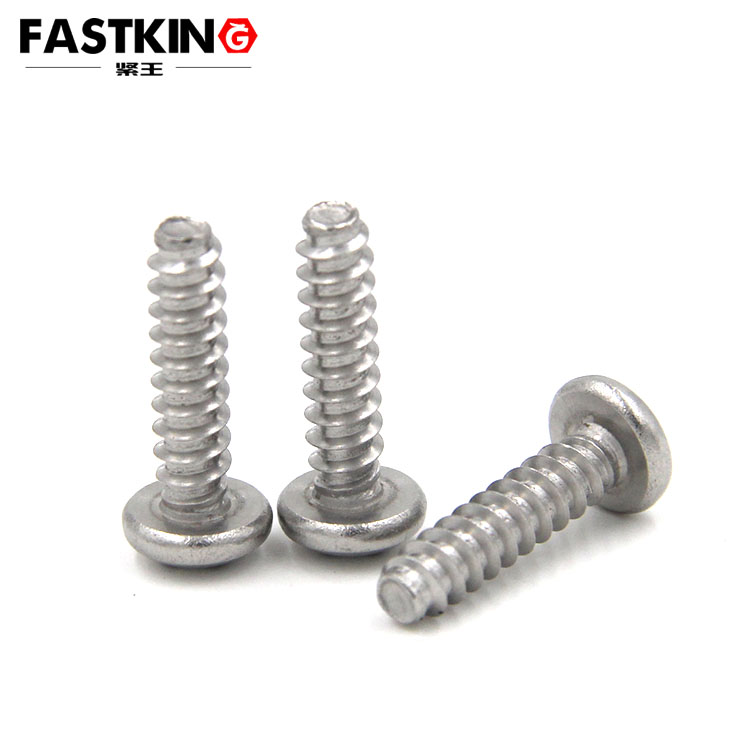- small screw,micro fastener,mini screw
- 0756-8586520
Countersunk Cross Recessed Nickel-Plated Small Head Screw
- Product description:In modern industrial manufacturing and daily life, screws are ubiquitous as the most fundamental and common fasteners. Among them, the nickel-plated countersunk Phillips small head screw plays an indi
I. Design Analysis: Why "Countersunk", "Cross", "Nickel-Plated", and "Small Head"?
-
Countersunk Design: The screw head has a standard 90-degree conical shape. Its primary purpose is to allow the entire head to sit completely within the conical countersink of the connected part once tightened, ensuring the screw's surface is flush with the workpiece. This design eliminates protrusions, avoids structural interference, achieves a smooth and clean appearance, and effectively reduces resistance and prevents snagging on moving parts.
-
Cross Recess Drive (PH): The cross recess (typically the Phillips PH type) provides excellent alignment for the screwdriver, making the tightening operation more convenient and efficient. Especially on automated assembly lines, it enables rapid, continuous driving, significantly boosting production efficiency.
-
Nickel-Plated Surface Treatment: This is key to its enhanced performance. The nickel plating acts as a dense, hard "protective armor." It not only effectively resists erosion from air, moisture, and certain chemicals, providing excellent anti-rust and anti-corrosion capabilities, but also gives the screw an aesthetically pleasing, smooth, silver-white appearance. Furthermore, the nickel plating offers a certain degree of lubricity, making the driving process smoother and preventing galvanic corrosion between the screw and metal materials (such as aluminum).

-
Small Head Design: "Small head" refers to the screw's shank having a relatively small diameter. This makes it particularly suitable for connecting thin sheets, precision components, or plastic parts where space is strictly limited. It avoids the need for excessively large pre-drilled holes and effectively minimizes the weakening of the connected structure's strength.
II. Core Application Scenarios: From Precision Electronics to Home Life
Based on the above design features, the application scenarios for nickel-plated countersunk cross recess small head screws are extremely widespread.
1. Electronics and Precision Instruments Field
This is its most typical application area. Whether in smartphones, laptops, tablets, smartwatches, or cameras, their internal structures are extremely compact, where space is at a premium.
-
Application Examples: Used to secure metal/plastic back covers of phones or laptops, motherboard brackets, battery compartment covers, keyboard modules, etc. The countersunk design ensures a smooth, integrated shell, not affecting the overall aesthetics or feel; the small head shank avoids stress concentration on thin walls and precise PCBs; the nickel plating resists corrosion from hand sweat and humid air, ensuring the long-term safety of internal components.
-
Value: Enables precise and reliable connections within the device's internal structure, crucial for the slim, lightweight, and high-integration design of electronic products.
2. Home Appliance Manufacturing Industry
Household appliances, such as microwaves, washing machines, air conditioners, and televisions, require both a robust internal structure and a clean exterior appearance.
-
Application Examples: Commonly used to secure appliance housings, control panels, decorative strips, and internal modules like optical drives or hard drives. The countersunk design gives appliances a seamless, flat appearance, making them easy to clean; the nickel plating can withstand harsh environments like kitchen grease and bathroom moisture, extending the product's lifespan.
3. Automotive Interiors and Components
Modern vehicle interiors are filled with electronic devices and decorative panels, demanding high standards of aesthetics, safety, and corrosion resistance from fasteners.
-
Application Examples: Found in instrument panels, center consoles, door trim panels, headlight assemblies, and more. They securely fasten various plastic trim pieces and electronic modules. The countersunk design prevents sharp protrusions that could potentially injure occupants; the nickel plating handles temperature fluctuations and potential condensation inside the vehicle.
4. Furniture Assembly and Office Equipment
From DIY flat-pack furniture to professional office partitions and filing cabinets, these screws are frequent guests.
-
Application Examples: Used to connect wooden boards, metal sheets, etc. The countersunk design creates perfectly flush joints in furniture, enhancing the product's grade and aesthetics; the cross recess allows easy assembly by users with a standard screwdriver; the nickel plating prevents rust stains from oxidation over long-term use, keeping furniture clean.
5. Mechanical Equipment and Sheet Metal Engineering
In the industrial sector, numerous control cabinets, chassis, and sheet metal enclosures require fastening.
-
Application Examples: Used to secure sheet metal parts, protective covers, nameplates, etc. It ensures the equipment housing remains flat, preventing interference with other moving parts; the nickel plating provides good corrosion resistance in industrial environments, reducing maintenance costs.
III. Summary of Core Purposes: A Multi-functional Integrated Solution
-
Achieving Flush Connections: The fundamental purpose of its countersunk design is to eliminate protrusions from the fastener head, meeting all applications requiring surface flatness, whether for aesthetic, safety, or functional considerations.
-
Providing Reliable Corrosion Protection: The nickel plating guarantees its long-term, stable performance. It enables the screw to adapt to various environments, including humid, acidic, alkaline, and salt spray conditions, making it widely used in indoor and outdoor products requiring high durability.
-
Adapting to Confined Spaces and Thin Material Connections: The small head and thin shank design make it an ideal choice for connecting thin sheet metal, plastic parts, and precision components. It minimizes damage to the parent material and maintains the structural integrity of the connected parts.
-
Enhancing Assembly Efficiency and Aesthetics: The cross recess drive facilitates rapid operation with both manual and automated tools, while the silver-white nickel-plated finish adds a touch of industrial elegance, making it refined even in "unseen" places.





